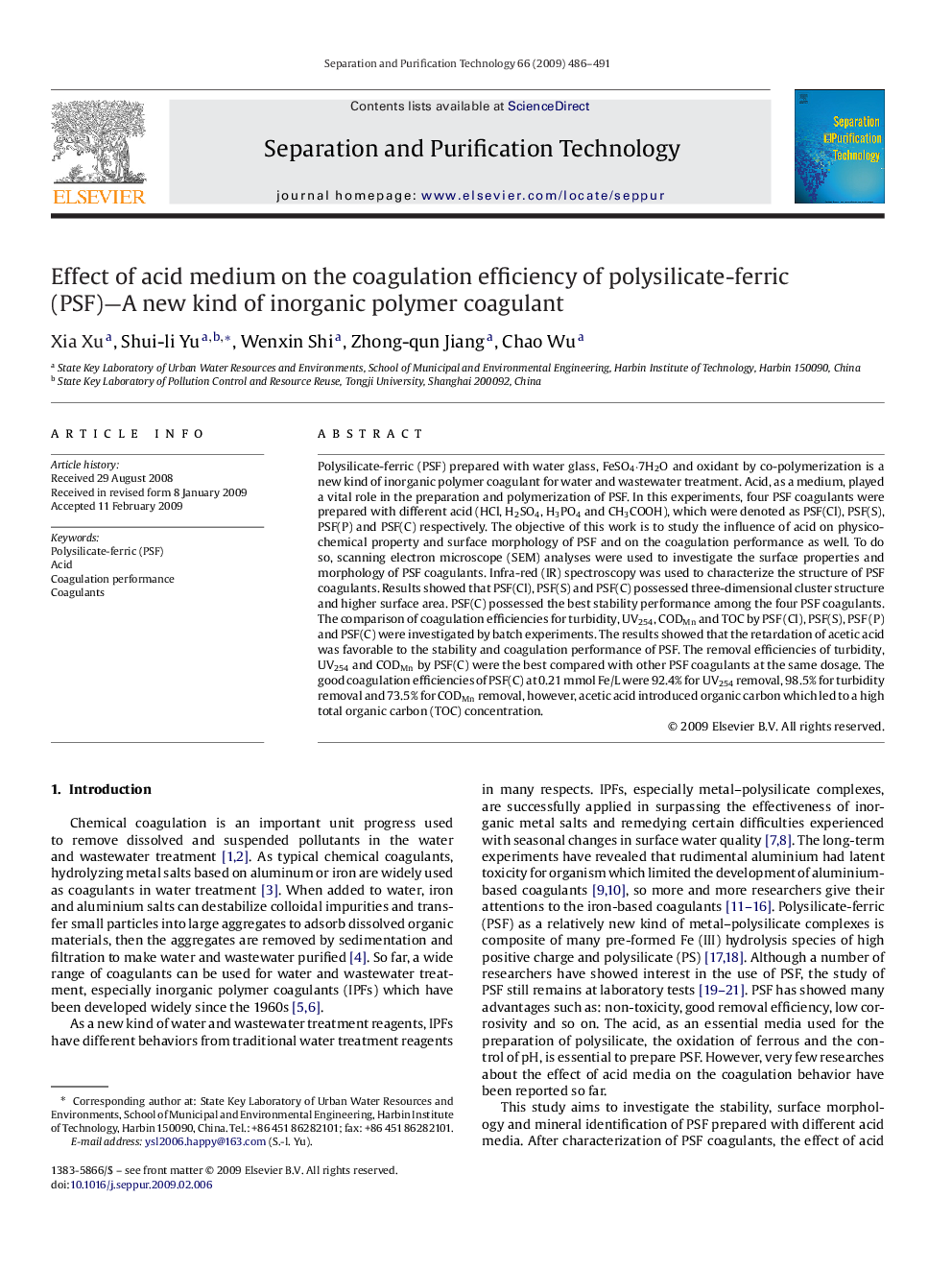| Article ID | Journal | Published Year | Pages | File Type |
|---|---|---|---|---|
| 643464 | Separation and Purification Technology | 2009 | 6 Pages |
Polysilicate-ferric (PSF) prepared with water glass, FeSO4·7H2O and oxidant by co-polymerization is a new kind of inorganic polymer coagulant for water and wastewater treatment. Acid, as a medium, played a vital role in the preparation and polymerization of PSF. In this experiments, four PSF coagulants were prepared with different acid (HCl, H2SO4, H3PO4 and CH3COOH), which were denoted as PSF(Cl), PSF(S), PSF(P) and PSF(C) respectively. The objective of this work is to study the influence of acid on physico-chemical property and surface morphology of PSF and on the coagulation performance as well. To do so, scanning electron microscope (SEM) analyses were used to investigate the surface properties and morphology of PSF coagulants. Infra-red (IR) spectroscopy was used to characterize the structure of PSF coagulants. Results showed that PSF(Cl), PSF(S) and PSF(C) possessed three-dimensional cluster structure and higher surface area. PSF(C) possessed the best stability performance among the four PSF coagulants. The comparison of coagulation efficiencies for turbidity, UV254, CODMn and TOC by PSF (Cl), PSF(S), PSF (P) and PSF(C) were investigated by batch experiments. The results showed that the retardation of acetic acid was favorable to the stability and coagulation performance of PSF. The removal efficiencies of turbidity, UV254 and CODMn by PSF(C) were the best compared with other PSF coagulants at the same dosage. The good coagulation efficiencies of PSF(C) at 0.21 mmol Fe/L were 92.4% for UV254 removal, 98.5% for turbidity removal and 73.5% for CODMn removal, however, acetic acid introduced organic carbon which led to a high total organic carbon (TOC) concentration.
